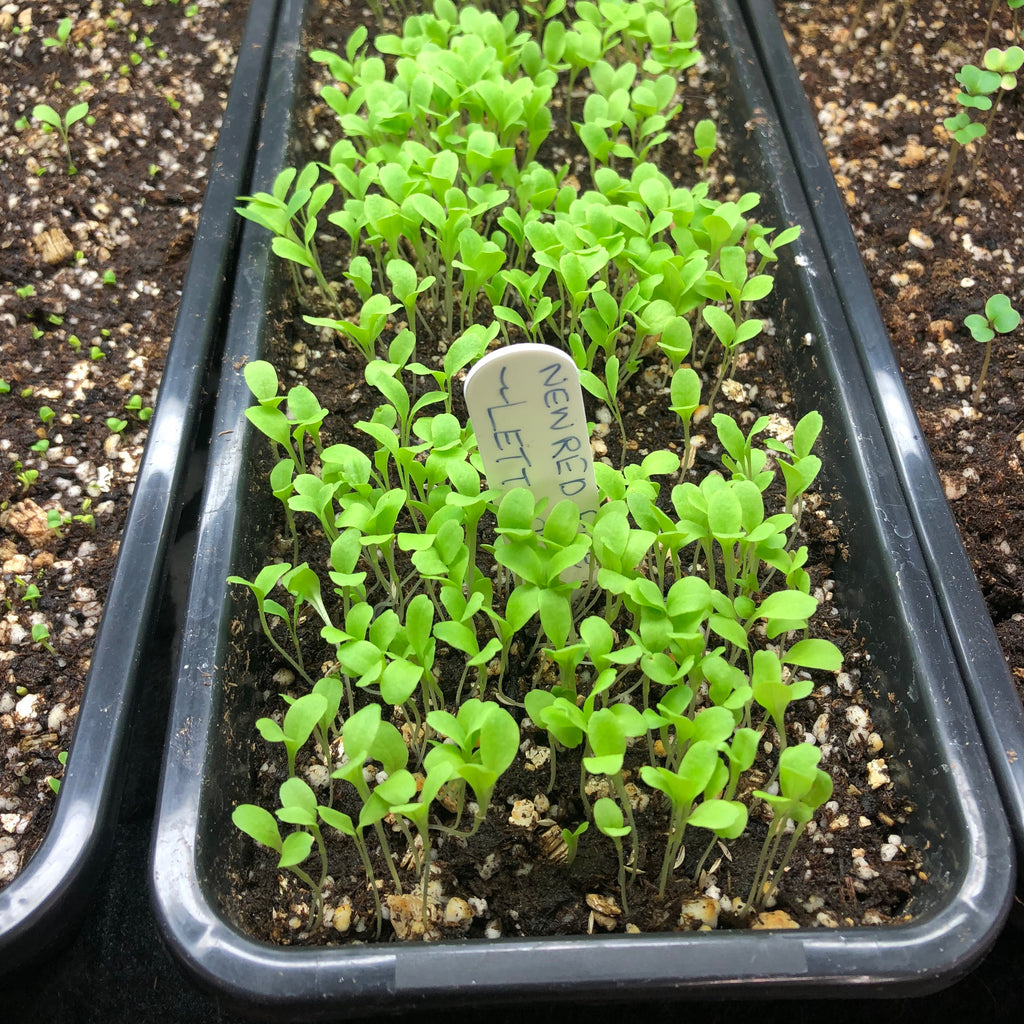Both microgreens and baby greens are easy options for home gardeners in cold climates, with harvests in as little as 15 days up to 35 days.
We have been hearing from many gardeners sharing their experience of growing either microgreens or baby greens indoors through the winter. Both are awesome! However, it is interesting to consider why some people prefer to grow microgreens while others go for baby greens; so let's run through this together.
Both microgreens and baby greens are very quick styles of growing tasty, nutritious salad greens and herbs at home. Each of these growing styles is highly space efficient, uncomplicated, and returns an excellent level of satisfaction and productivity. The biggest difference at first glance is how quickly you get to harvest: for microgreens, the young plants are harvested at approximately 15 days from sowing while baby greens are harvested at 21 to 35 days from sowing. Of course, this also means the microgreens are much smaller. In both cases, you end up with wonderfully tasty ingredients for your salads, sandwiches and other fresh recipes and these are hyper-local and easily produced 100% organically. Plus, you no longer have to worry about whatever is happening at the grocery store in terms of price, availability, and freshness.
So, if microgreens are much smaller, why bother? There is evidence that edible plants at the microgreens stage are at peak nutrition and flavour, having drawn most of their energy from the stored reserves found in the seed itself rather than from the soil. This same principle also means that you do not need to use much in the way of added fertilizer for microgreens, as they are harvested so quickly they are not needy for plant food (although we still add some worm castings/compost to the soil, as it helps the seedlings be healthier overall, and improves water management in the soil). Because the plants are harvested so quickly, it is also rare to see pest or disease issues and their care is very basic (just lots of light and attention to watering). Microgreens are not going to form the bulk in a salad but they will deliver huge taste and nutrients!
What are the benefits of growing up to baby greens size? Baby greens are a slightly longer commitment to get to first harvest, but it is amazing how much bigger leafy greens become if allowed to grow those extra 7 to 14 days. Baby greens can definitely be used to make full salads and they still have such a short crop time that there are rarely challenges with pests or disease. Although microgreens have been found to possess peak nutrition, baby greens are still highly nutritious and delicious. With baby greens, we definitely recommend using nice composty soil at which point no extra fertilizer is required, and this technique supplies enough nutrition for at least two cuts from your trays (vs. microgreens which are always a single harvest).
Popular seeds to grow as microgreens:
-
Arugula
-
Basil
-
Beets
-
Broccoli
-
Collards
-
Cilantro
-
Kale
-
Lentils
-
Mustards
-
Peas
-
Sunflowers
-
Wheatgrass
Popular seeds to grow as baby greens:
-
Arugula
-
Asian Greens
-
Basil
-
Chervil
-
Cilantro
-
Frisee
-
Kale
-
Leafy Lettuces
-
Mizuna
-
Mustards
-
Spinach
Let us know what some of your favourite greens to grow indoors are by leaving a comment here!







